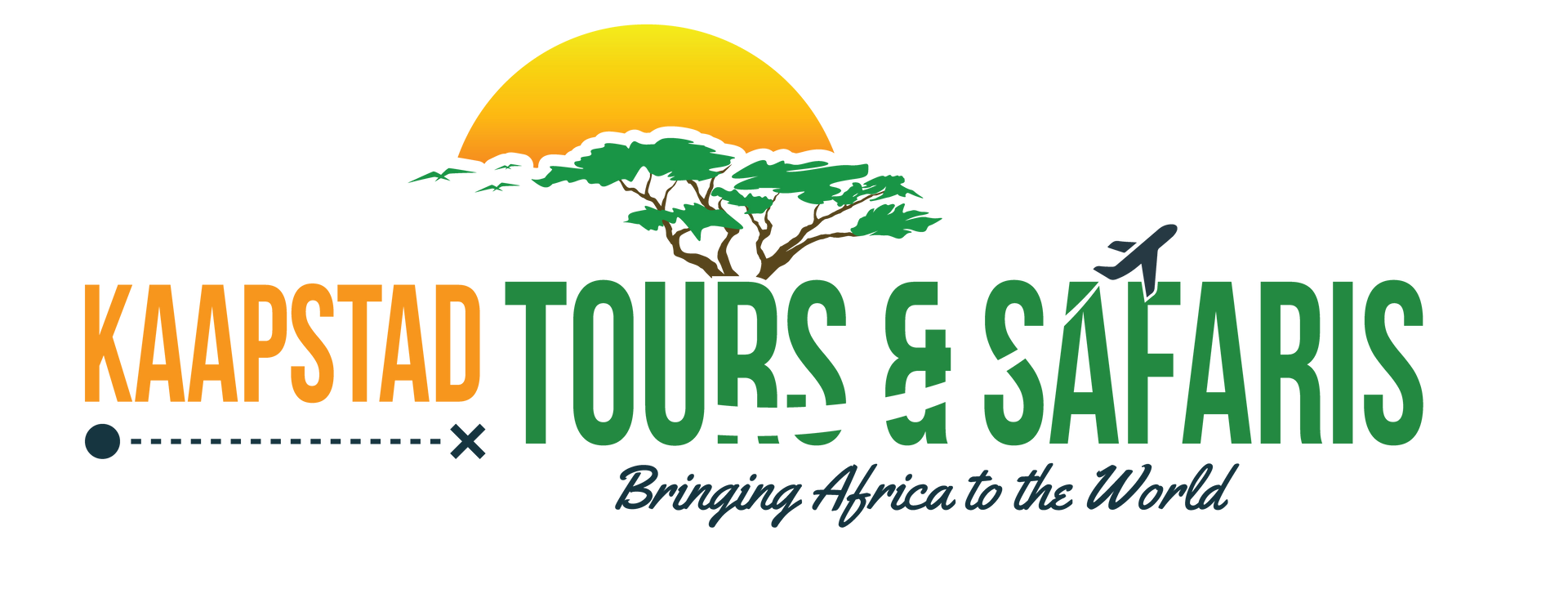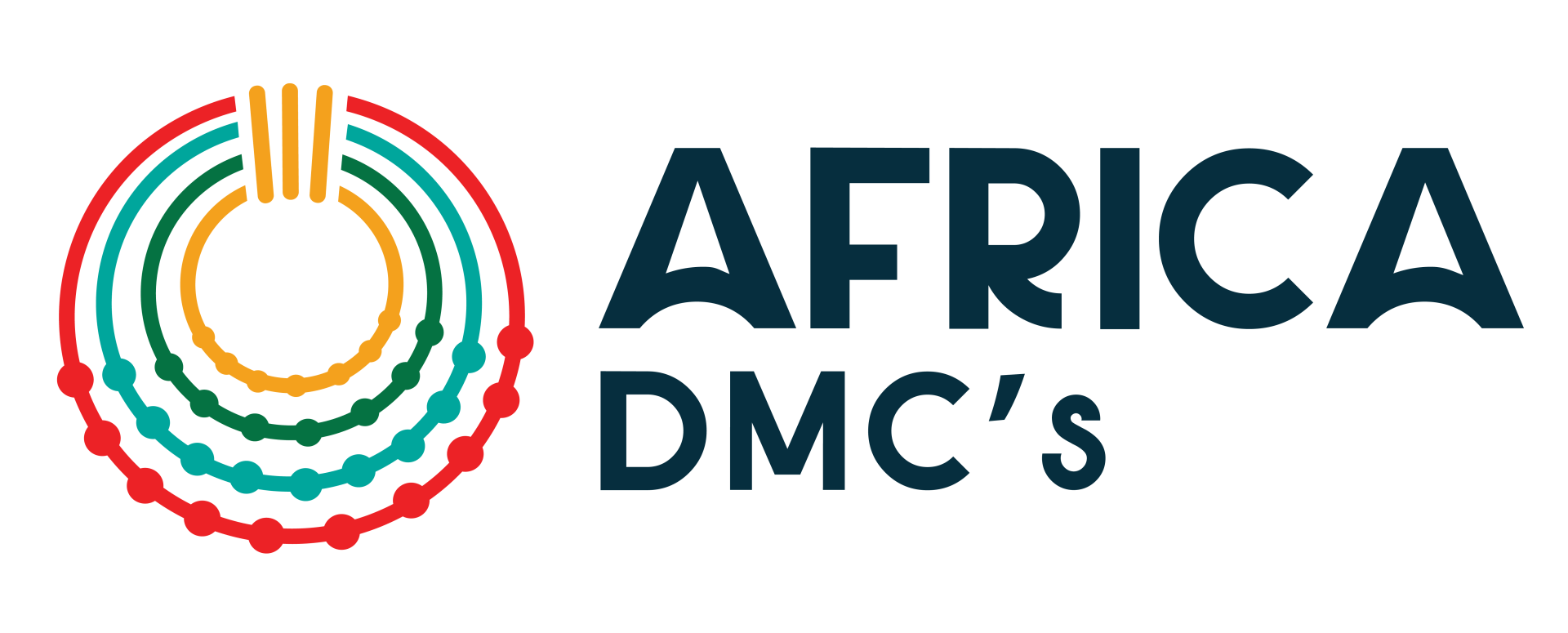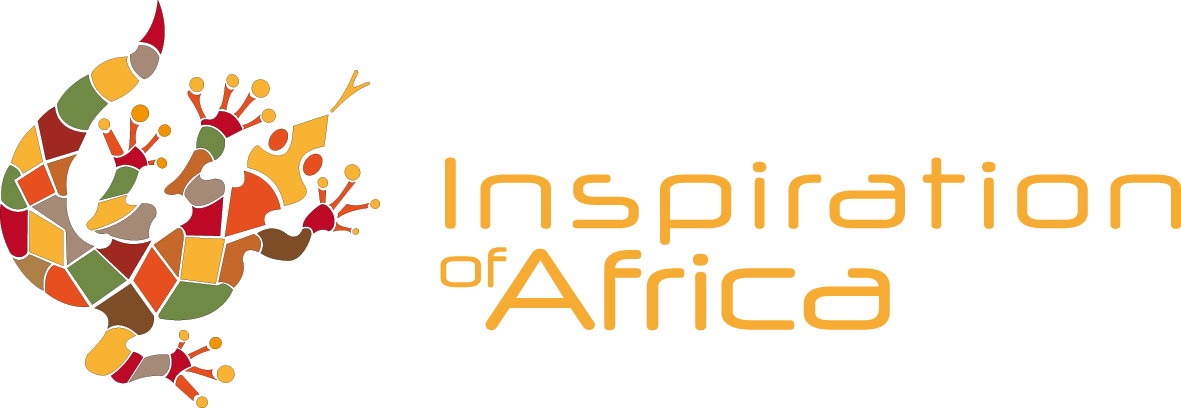ZAMBIA
UNDISCOVERED COUNTRY
Zambia is a landlocked Southern African country, just a little larger than Spain and Italy combined. Zambia is unspoiled by mass tourism and is rich in wildlife, superb forests and meandering rivers.
VICTORIA WATERFALLS – ZAMBEZI NATIONAL PARK
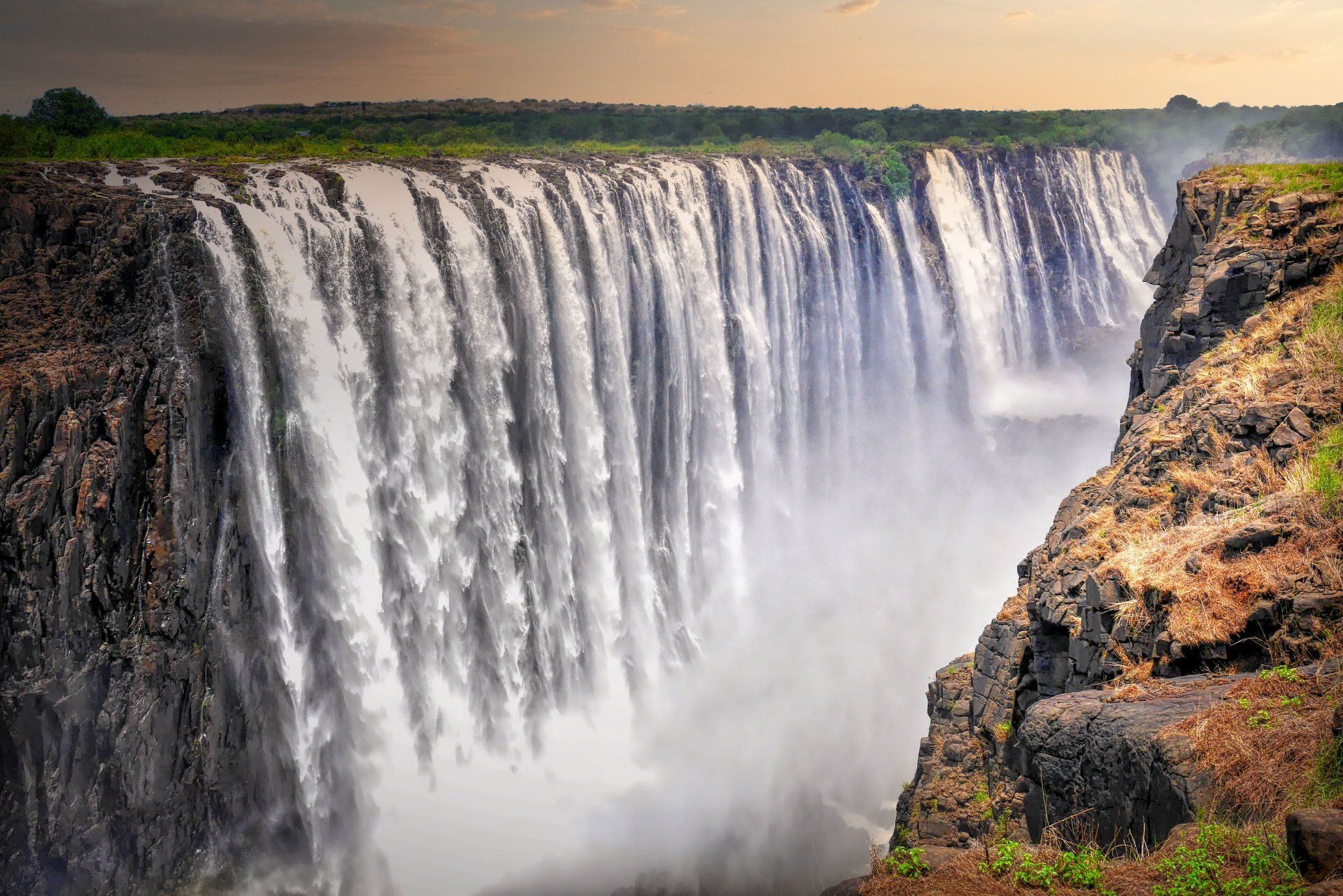
The 2.340 ha Victoria Falls National Park and the 53.600 ha Zambezi National Park in Zimbabwe are next to one another and have the same operation centre. The Zambian side of the river is safe even with the bad political situation in Zimbabwe.
The biggest attraction is the enormous waterfall, 1700 m wide and maximal 108 m height. The waterfall is one of the most spectacular on our planet.
The amount of water flowing through is the lowest during Augustus and December but it is the most ideal time to see the actual falls as there is not that must mist created by the falling water.
The rain season is from November to March and it can be quite hot and very humid during that period. The mid-winter months are dry and cool and nights can be cold.

The 2.340 ha Victoria Falls National Park and the 53.600 ha Zambezi National Park in Zimbabwe are next to one another and have the same operation centre. The Zambian side of the river is safe even with the bad political situation in Zimbabwe.
The biggest attraction is the enormous waterfall, 1700 m wide and maximal 108 m height. The waterfall is one of the most spectacular on our planet.
The amount of water flowing through is the lowest during Augustus and December but it is the most ideal time to see the actual falls as there is not that must mist created by the falling water.
The rain season is from November to March and it can be quite hot and very humid during that period. The mid-winter months are dry and cool and nights can be cold.
KAFUE NATIONAL PARK
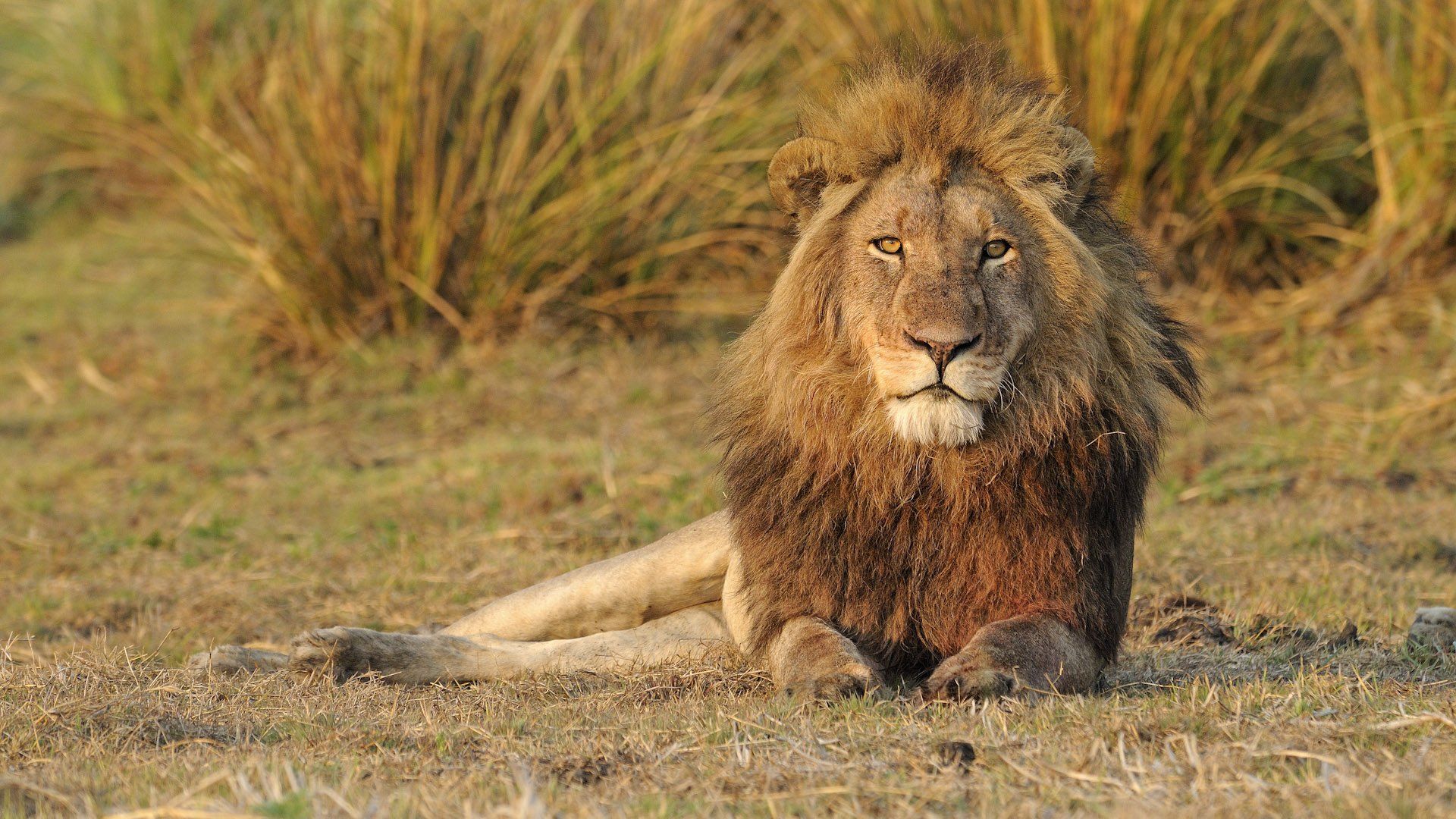
The Kafue National Park is found in the centre of western Zambia and is the oldest and largest of Zambia’s national parks. It covers a massive 22.400 km².
First established as a National Park in the 1950’s by the legendary Norman Carr, Kafue is one of the largest national parks in the whole of Africa. Despite its size and prominent location only two hours drive from Livingstone, it remains little-known and largely unexplored with vast tracts of its virgin bush still untouched. Thanks to its size and variety of habitat types the Kafue holds a fantastic diversity of wildlife .
In recent years the Park has seen a well-managed growth in the number of Safari Camps and Lodges that operate in and around the Park. This new interest has brought with it more visitors and investment to the area, notably in infrastructure with a number of well-graded roads and airstrips.
As a consequence of the increasing interest and benefits in terms of investment this brings, the wildlife is beginning to enjoy an increased level of protection by the Zambian Wildlife Authority (ZAWA), always aided and supported by the operators in and adjoining the park.

The Kafue National Park is found in the centre of western Zambia and is the oldest and largest of Zambia’s national parks. It covers a massive 22.400 km².
First established as a National Park in the 1950’s by the legendary Norman Carr, Kafue is one of the largest national parks in the whole of Africa. Despite its size and prominent location only two hours drive from Livingstone, it remains little-known and largely unexplored with vast tracts of its virgin bush still untouched. Thanks to its size and variety of habitat types the Kafue holds a fantastic diversity of wildlife .
In recent years the Park has seen a well-managed growth in the number of Safari Camps and Lodges that operate in and around the Park. This new interest has brought with it more visitors and investment to the area, notably in infrastructure with a number of well-graded roads and airstrips.
As a consequence of the increasing interest and benefits in terms of investment this brings, the wildlife is beginning to enjoy an increased level of protection by the Zambian Wildlife Authority (ZAWA), always aided and supported by the operators in and adjoining the park.
-
Passports and visa
This is a guide only – please check with your nearest Zambian Consulate for up-to-date information. All visitors are required to carry a passport that is valid for six months beyond the intended length of stay. There should be sufficient blank pages for any visa as well as for entry stamps upon arrival.
-
Currency
Zambia’s unit of currency is the Zambian kwacha, which is divided into 100 ngwee. Notes are issued in denominations of K10,000; 5,000; 1,000; 500; 200; 100 and 50
-
Climate and temperature
Climate January-March The “Emerald Season” is one of regrowth, replenishment and rebirth. The birds are breeding and its peak birth season of many animals. The rainfall is at its highest during these months but it mostly falls at night. With the rainfall, the Victoria Falls get to the peak of their flow around March. Weather: Warm / need waterproofs. April-May The rains have gone but there is the odd potential rain storm around. The grass is now tall and green, the skies are clear and the blue, the new generation of birds have left the nests and the migrants start to leave. Flow of the Victoria Falls is at its peak. Weather: Warm in the day and not yet cold at night.
June-July This is now the “dry season” and is also our winter. The grass dries up and dies back, this makes for easier sightings when in the Luangwa Valley. Weather: warm days but cold at night and in the early mornings. Jackets needed.
In August, the bush is dry. Lagoons now obviously shrinking in the Luangwa and the flow of the Falls decreasing. Weather: Varies from cool to hot. Can still have cold spells.
September Weather: Hot, dry and hazy. Trees flower and lose leaves.
October New growth starts – and there are newborns everywhere towards the end of the month. Weather: Very dry and hot with cloud build up, could have occasional rain when it can cool down and clear the air. It can be very hot (up to 45 degrees in the shade).
November-December An extremely beautiful and exciting time of the year. The migrant birds arrive; excellent bird-watching. The onset of the rains can also bring a deluge of flying ants and other insects (sometimes in pretty big proportions, but normally lasting a few hours). With the insects come the cooler temperatures but also the humidity. Weather: Hot, slightly humid. Early rains, vary from the odd shower to short periods of daily afternoon storms. These can be very dramatic with wind, dark clouds, and shafts of light, sheet lightening.
-
Language
In addition to the English language, the government of Zambia also recognizes 7 official regional languages. These regional languages include: Bemba, Nyanja, Tonga, Lozi, Lunda, Kaonde, and Luvale.
-
Transport
In Zambia you drive on the left-hand side. An international Drivers License is required. The traffic signs are mostly in accordance with international standards. Be extra cautious when driving a 4×4 or 2×4 vehicle in sandy roads.
Minimum age to drive a rental care is 23 years old.
Seatbelts are compulsory in the front and back of the vehicle.
To drive legally in Zambia: you must acquire an International Driving Permit. The IDP is a translation of your national driving license and allows motorists to drive vehicles in foreign countries. Be sure to carry both your IDP and national driving license with you at all times.
You will need a police clearance to drive any vehicle across any of our SADC borders. This must be organized in advance of your travels. Such a documents has to be ordered in advance with your car rental company.
GET IN TOUCH
Email:
Phone: +27 82 297 5218
Address:
23 Gemsbok Street
Krugersdorp
South Africa,
1731
Contact Us
We will get back to you as soon as possible.
Please try again later.
